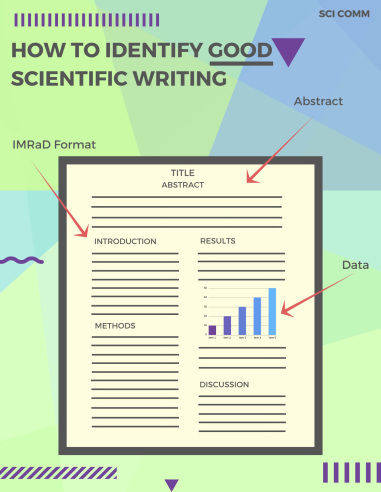


Infographic by Amy Foltz
Scientific writing is an important tool for communicating science based research to a knowledgeable audience in the science community. Scientific writing covers a specific topic in a field and for that reason must be written in a structured and detailed manor. Because the information is so detailed and the audience is assumed to have at least a general knowledge in the topic, the language used in scientific writing often contains technical jargon specific to the field at hand. To convey the research data as effectively as possible, scientific research often begins with a strong abstract to summarize the findings of the research and follows an IMRad format, which stands for Introduction, Method, Results and Discussion.
A good scientific paper should provide the reader with a comprehensive understanding of the hypothesis of the study, how it fits into a larger body of knowledge, and contextualizes the specific results of the study. To do this, it is important that the methods of data collection are clearly described so that the method can be replicated. It is up to the scientific writer's discretion to decide if it is necessary to include the entire data set or include the parts that provide the best insight to the conclusion of the data.
Resources:
https://esajournals.onlinelibrary.wiley.com/doi/full/10.1002/bes2.1258
https://esajournals.onlinelibrary.wiley.com/doi/full/10.1002/bes2.1258